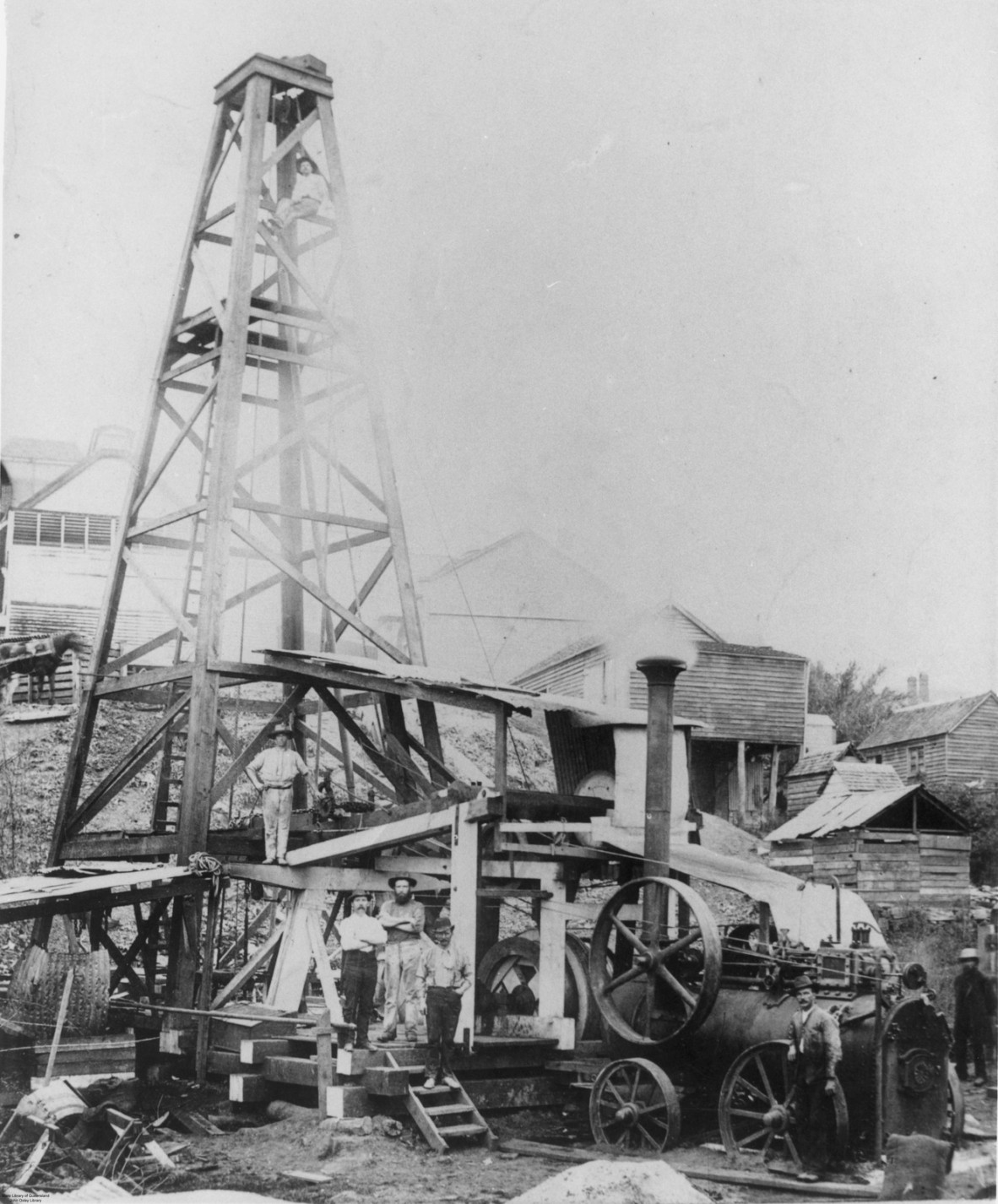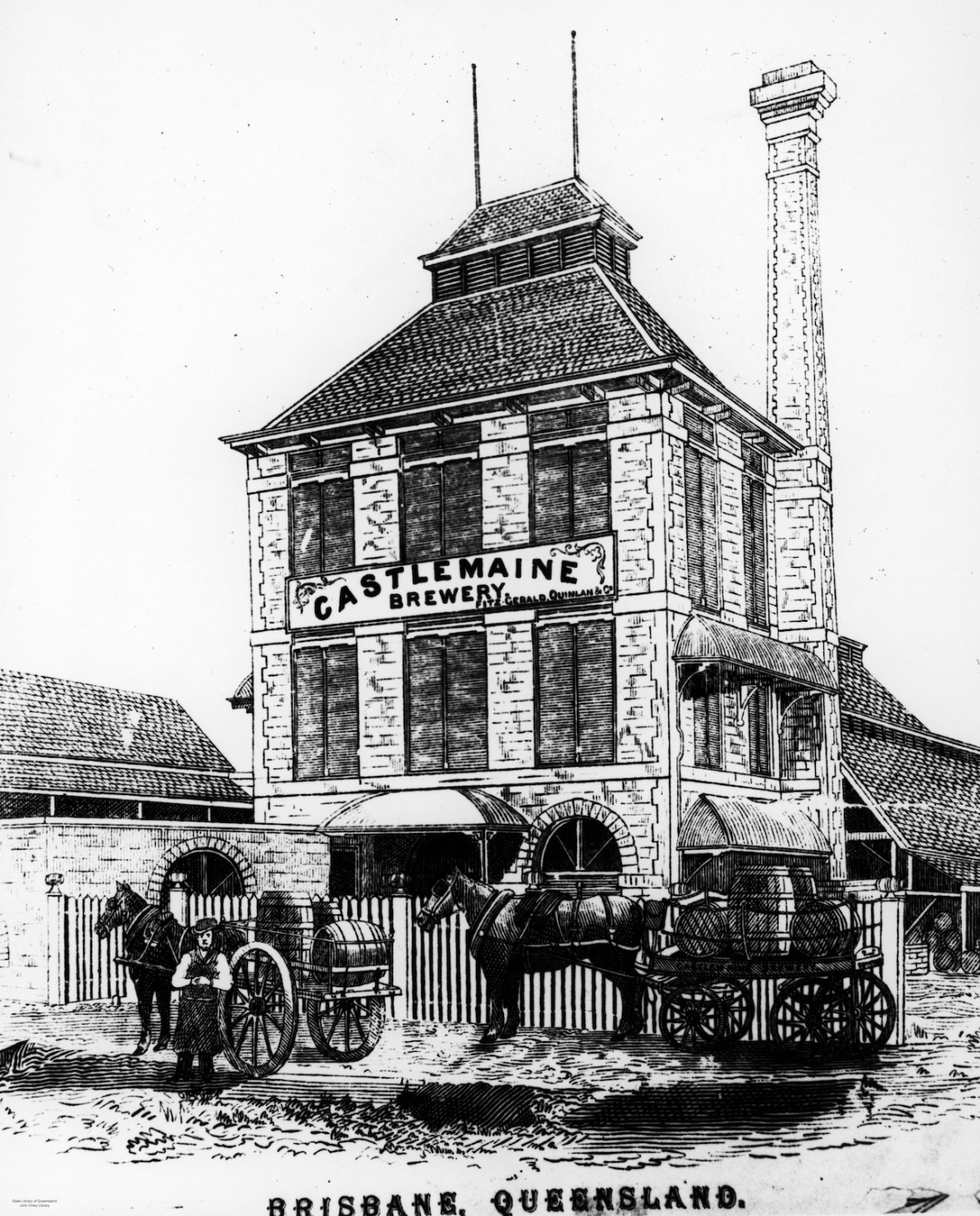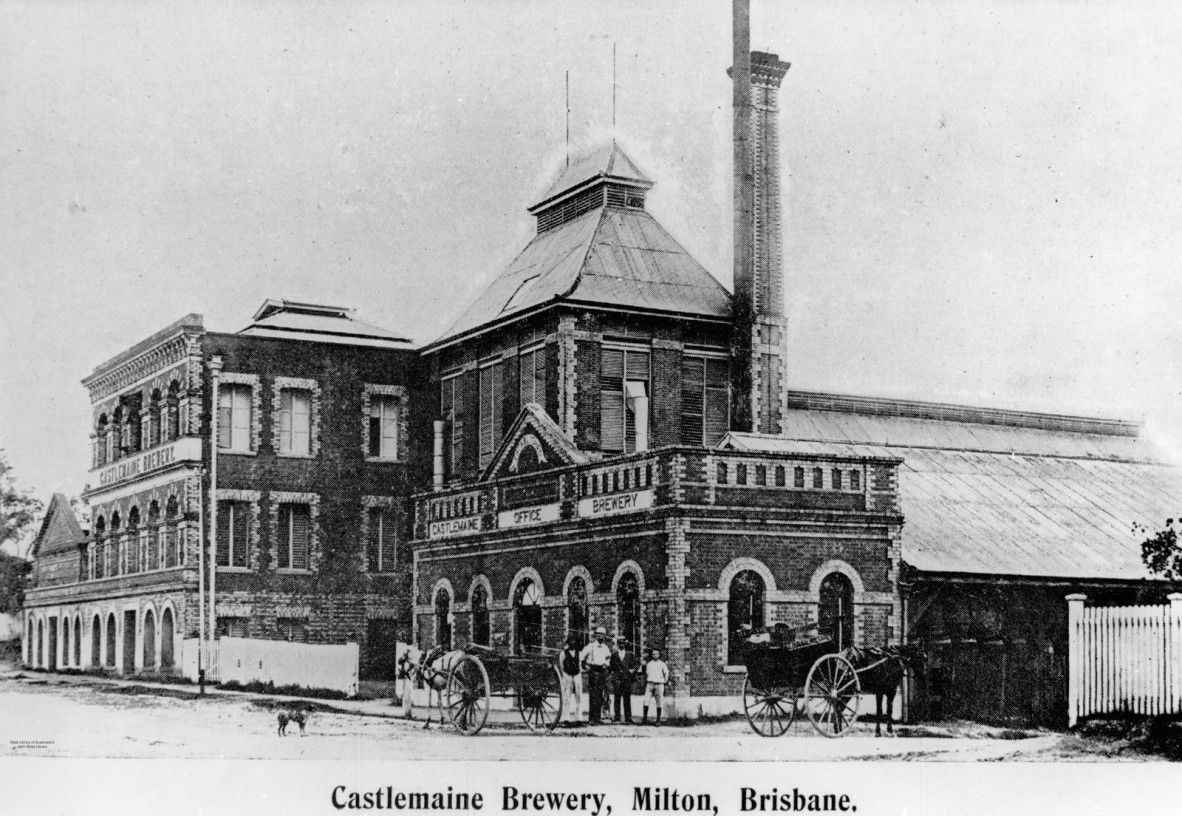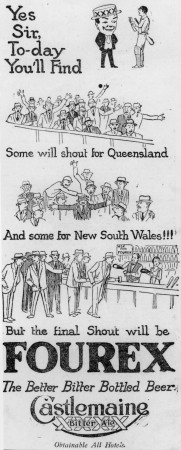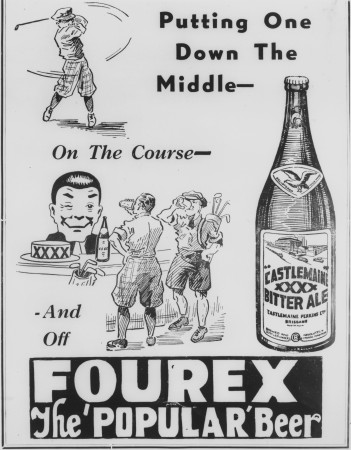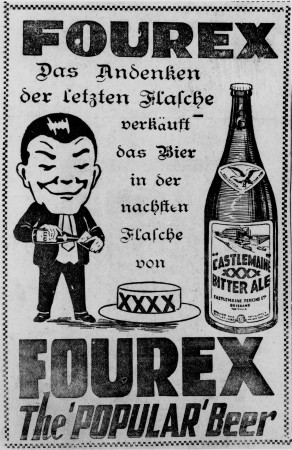A beer for Queensland tastes - the history of XXXX and Castlemaine Perkins Brewery
By Chris Currie | 26 June 2024
Few brands are more associated with Queensland than XXXX beer, brewed by Castlemaine Perkins beneath the unmistakable neon sign at Brisbane’s Milton brewery.
The history of the brewery is a fascinating one, reflecting the industrial and social changes of the Sunshine State, and one that can be told through the many items held in State Library of Queensland’s collections, from newspaper articles to company records, from commemorative beer bottles to advertising jingles!
Crack open a cold one and let’s dig in ...

Trucks and employees lined up in front of Castlemaine Perkins Brewery at Milton, Brisbane, 1929, John Oxley Library, State Library of Queensland.
A drink for Queenslanders - the birth of XXXX Bitter Ale
After surviving the economic recession – and the Great Flood – of the early 1890s, and at the beginning of the Great War in 1914, the company made the decision to ‘withdraw from the general and mercantile fields and concentrate on brewing’.
December 1915 saw the apparent introduction of Castlemaine K.K. Ale, a light ale variously described as ‘the natural beverage for this climate’, ‘perfection’ for mankind’s demand for ‘some stimulant in its liquid form’, facilitating ‘the digestion of other nutriment’, and containing ‘palatable, and entertaining beautiful properties’.
Curiously, a number of short notices for K.K. Ale use only the words ‘the alcohol present in this beer is only sufficient to enable it to rank as an alcoholic beverage’. The product had disappeared from advertising by 1918.

Despite numerous advertisements in December 1915 inviting Queenslanders to make Castlemaine K.K. Ale their drink of summer, it had seemingly disappeared by the beginning of 1916.
In 1916, according to former Castlemaine Perkins CEO, the late Frank Burnett, Castlemaine’s directors decided to concentrate on brewing a beer ‘especially for Queenslanders’.
Along with a need to suit Queensland tastes, the beer also needed to stand up during transport to the ‘hottest and driest parts of the state’.
In 1916, Castlemaine XXXX Sparkling Ale (note the extra X) began production, but was ‘plagued with brewing problems’ and produced much expensive waste.
In an effort to solve the problem, the company employed Bohemia (now Czech Republic)-born Master Brewer Alois Wilhelm ‘Bill’ Leitner, who bought with him significant experience at breweries across Victoria, New South Wales and South Australia.
The result of Leitner’s expertise (and some choice strains of European yeast) produced both a redesign of the brewery and a new beer: XXXX Bitter Ale, a product still consumed by many Queenslanders today.
The new brew, a result of ‘costly experiments ... alterations and additions, combined with the most expert analytical tests’ was announced in the Friday 22 February 1924 edition of The Daily Standard, just above a short news item about a 9-year-old cutting her foot on some glass.
Interestingly, Keith M. Deutsher’s The Breweries of Australia notes the XXXX trademark was applied for on 3 December 1894, some 20 years before the beer first poured.
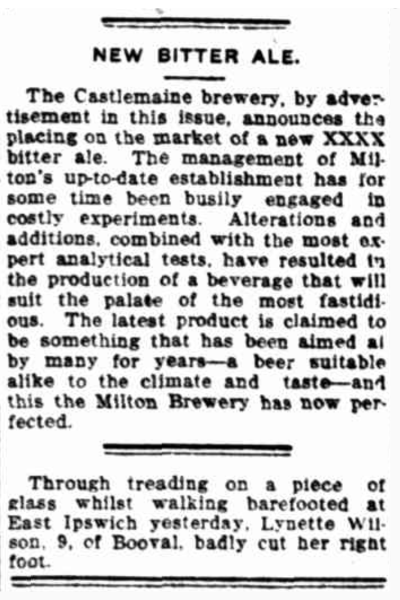
Get better soon, Lynette!
Who was Mr Fourex?
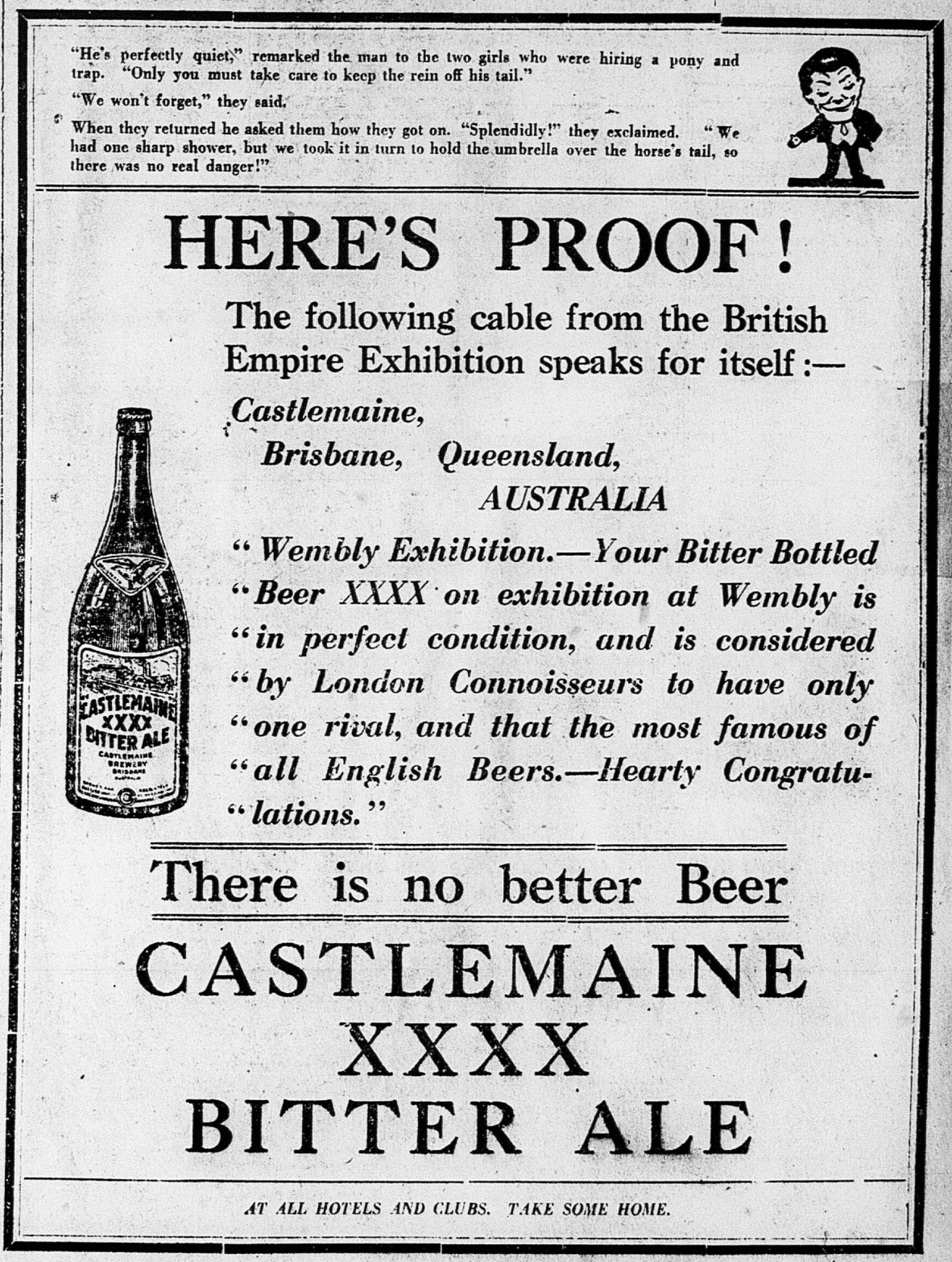
The first appearance of Mr Fourex, 3 October 1924.
In October 1924, the first iteration of ‘Mr Fourex’, the company’s famous mascot, appeared in a series of advertisements (albeit without his famous XXXX hat). The character is thought to be the work of illustrator Ian Gall (many of Gall’s original political cartoons in fact call State Library home). On 29 March 1928, the Mr Fourex trademark was registered.
Though not often noted, these advertisements featured for the first time the Milton brewery on the beer’s label, and the appearance of ‘Castlemaine jokes’, perhaps a hint at the use of humour that was to characterise Australian beer advertising over the next century.
Below are some early advertising examples.
As to the inspiration for Mr Fourex, an answer has never really been definitively found. One popular claim to his inspiration is Castlemaine Perkins General Manager Paddy Fitzgerald, although he didn’t start work at the brewery until 1933. Another theory is that Mr Fourex was drawn after ‘a well-known dwarf‘ who sold newspapers in Fortitude Valley.
According to a history produced by the company in 1993, ‘no one can confirm’ the identity of everyone’s favourite winking mascot. Nonetheless, the visage of Mr Fourex appears on everything from tea towels to beer steins in State Library’s collections.
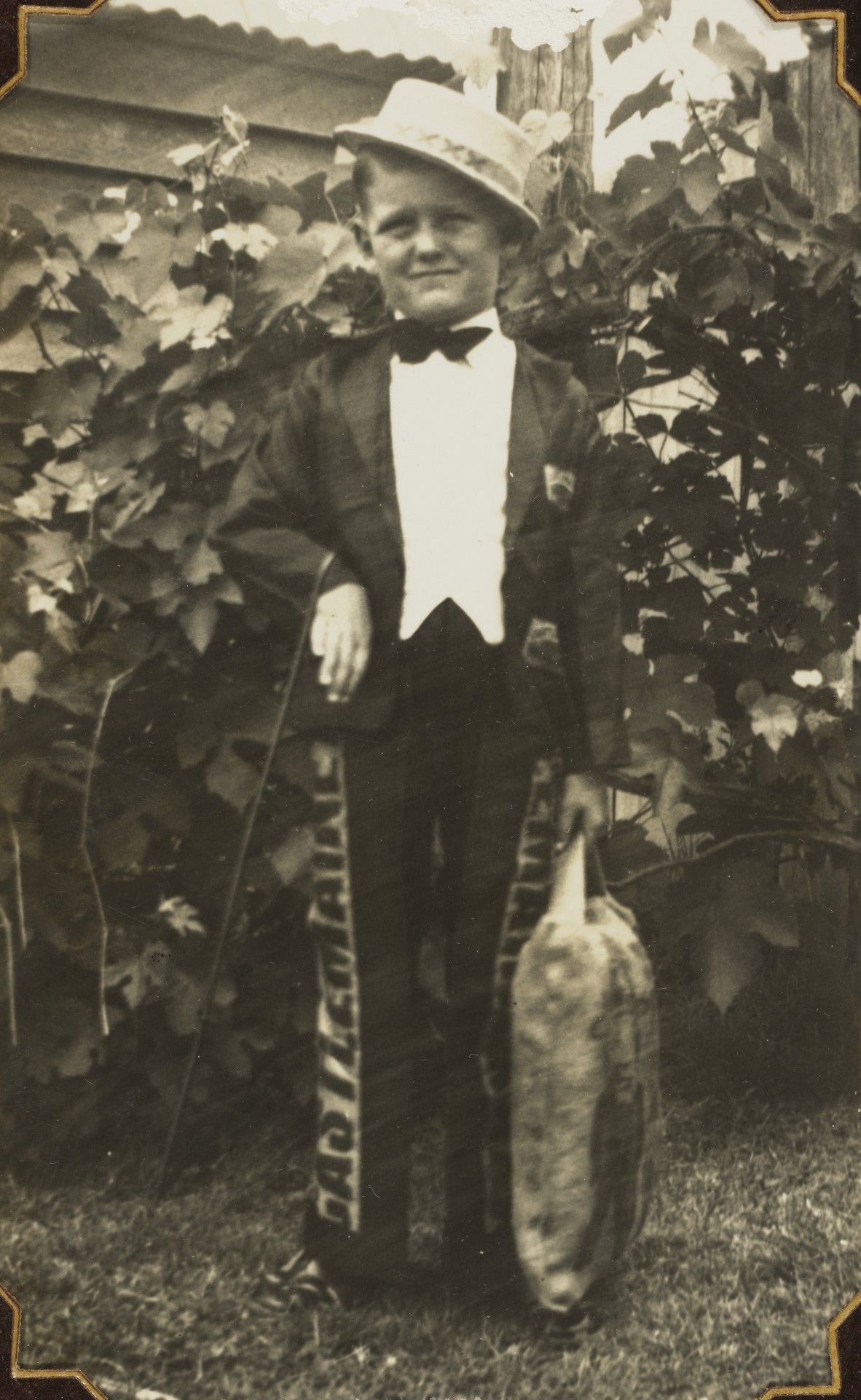
Young boy dressed as Mr Fourex (1925-1950).
How did Castlemaine become Castlemaine Perkins?
In August 1928, it was announced that Castlemaine Brewery and Quinlan Gray and Co. Ltd would merge with Perkins and Co. Ltd.
Perkins and Co had much in common with Castlemaine – most notably its establishment by a pair of brothers who moved from Victoria to Queensland. Patrick and Thomas Perkins built the Downs Brewery in Toowoomba in 1868, before taking over an established Brisbane brewery, Mary Street’s The City Brewery.
Perkins and Co. had in fact once been a fierce competitor to Castlemaine (even going as far as producing a XXXXX beer) but had fallen on hard times.
The resultant company, Castlemaine Perkins Ltd, was now the largest brewing operation in Queensland, assuming the entirety of Perkins’ Toowoomba operations, sections of their city plant, along with the trade of 69 of their freehold and leased hotels.
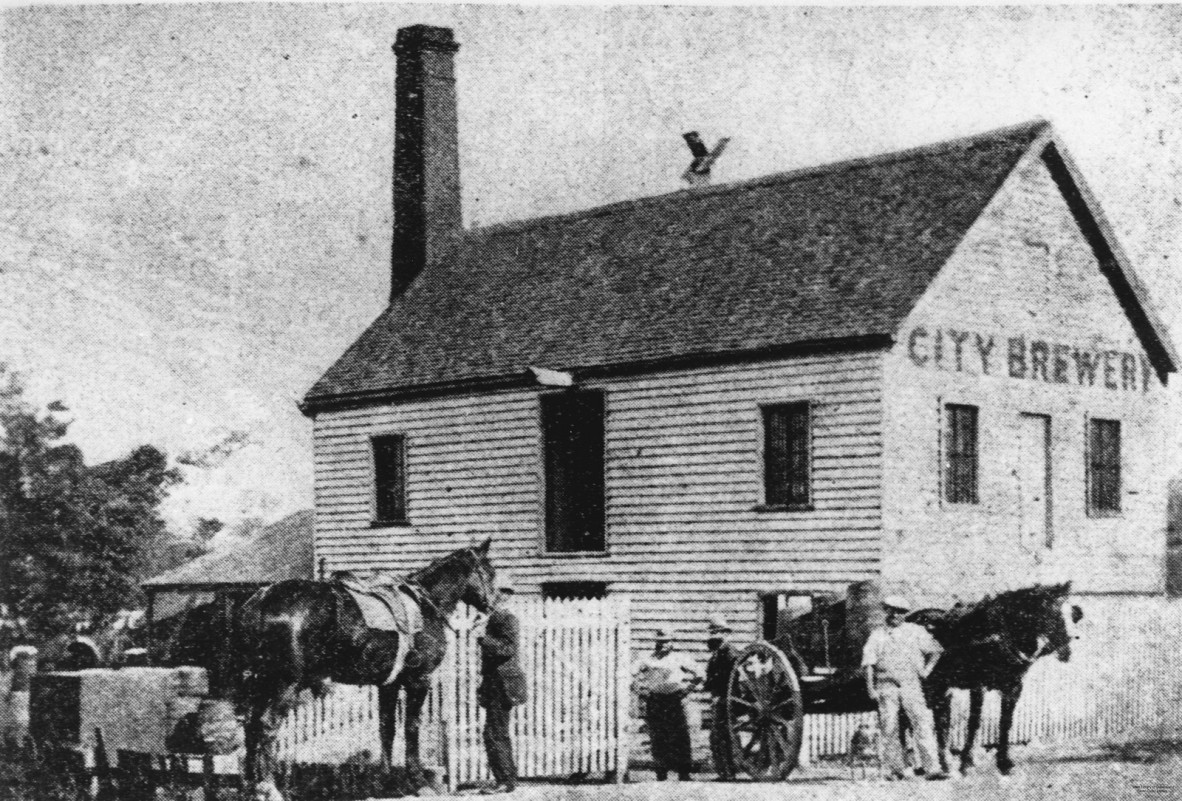
City Brewery, owned by Perkins & Co., Brisbane, 1872-1882, John Oxley Library, State Library of Queensland.
"Help your State and help yourself" - the rapid growth of Castlemaine Perkins
In October 1928, notice of 'extensive alterations and additions’ in the form of cold store and packing rooms to the Milton brewery were advertised. At a published cost of £50,000 (some $4.8 million today), the renovations were hoped to double the level of production.
By December, The Brisbane Courier declared that it would be ‘the most modern and complete plant and buildings of any brewery in the Commonwealth’, with the capacity to produce ‘600 dozen’ bottles per hour and its own power substation to fuel all activities.
At this time much positive press was produced to celebrate the brewery’s preference for Queensland materials. A curious advertorial, of the type that would repeat regularly throughout the decade, was published to welcome in the New Year in January, 1931 in The Truth.
The full-page spread was split between Castlemaine Perkins and their main competitor, Fortitude Valley’s Queensland Brewing, Ltd. (better known as Bulimba Beer, producer of the well-known Gold Top Pale Ale), highlighting that their malt, sugar, bottles, labels and even bottlecaps were all produced in Queensland.
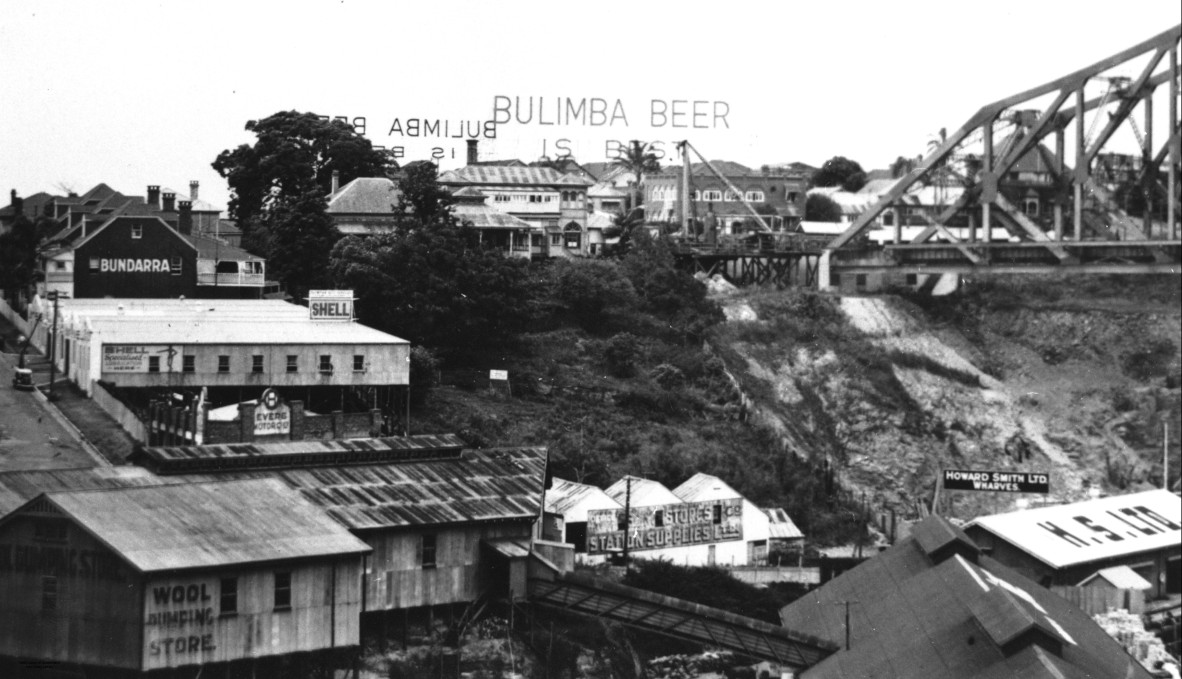
Queensland Brewing Company building overlooking the north section of the Story Bridge, partway through being built, 1938.
Indeed, both brewing companies would continue to operate in mutually beneficial partnership. In June 1931, amid ongoing economic depression and an influx of beers from southern states – the net results of which, according to the Castlemaine Perkins 1931 AGM, were especially dire for the hotel industry – the 2 breweries issued a statement announcing the retail price of their beer would be reduced.
‘By adopting this action the local breweries are bringing the price of bottled beer to a level which should be within the purchasing capacity of the consuming public,’ the statement read. ‘This is essentially a local industry, which should receive support from patriotic Queenslanders ...’
Both breweries received enthusiastic support from ‘parties of business men’ invited to tour their facilities, with one observing ‘it all comes back to the old slogan “Help your State and help yourself”’.
There was no doubt Castlemaine Perkins was investing in the state. The 1930s saw a period of rapid growth for the Milton site, with the construction of 3 refrigerated beer cellars, a malt tower, grain storage (upgrading from stacked bags to ‘rat-proof bins’) and a gyle (fermentation) room replete with 14 glass-lined steel beer vats. In 1936, the company purchased land in Black Street to complete a significant expansion of 7 acres costing some £160,000.
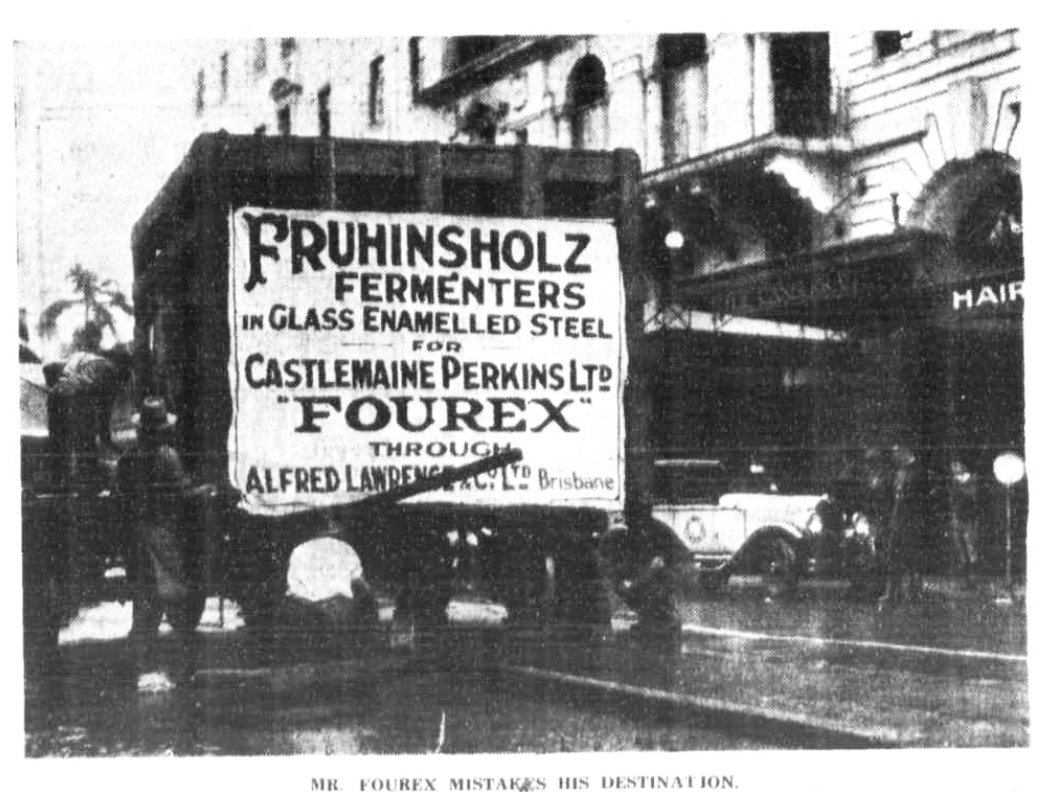
On 10 August 1934, a truck transporting one of Castlemaine’s new glass-enamelled steel vats broke down opposite the Canberra Hotel – ironically a “dry hotel” erected in 1929 by the Queensland Prohibition Leage as establishment that would exist ‘without the curse and nuisance of liquor’.
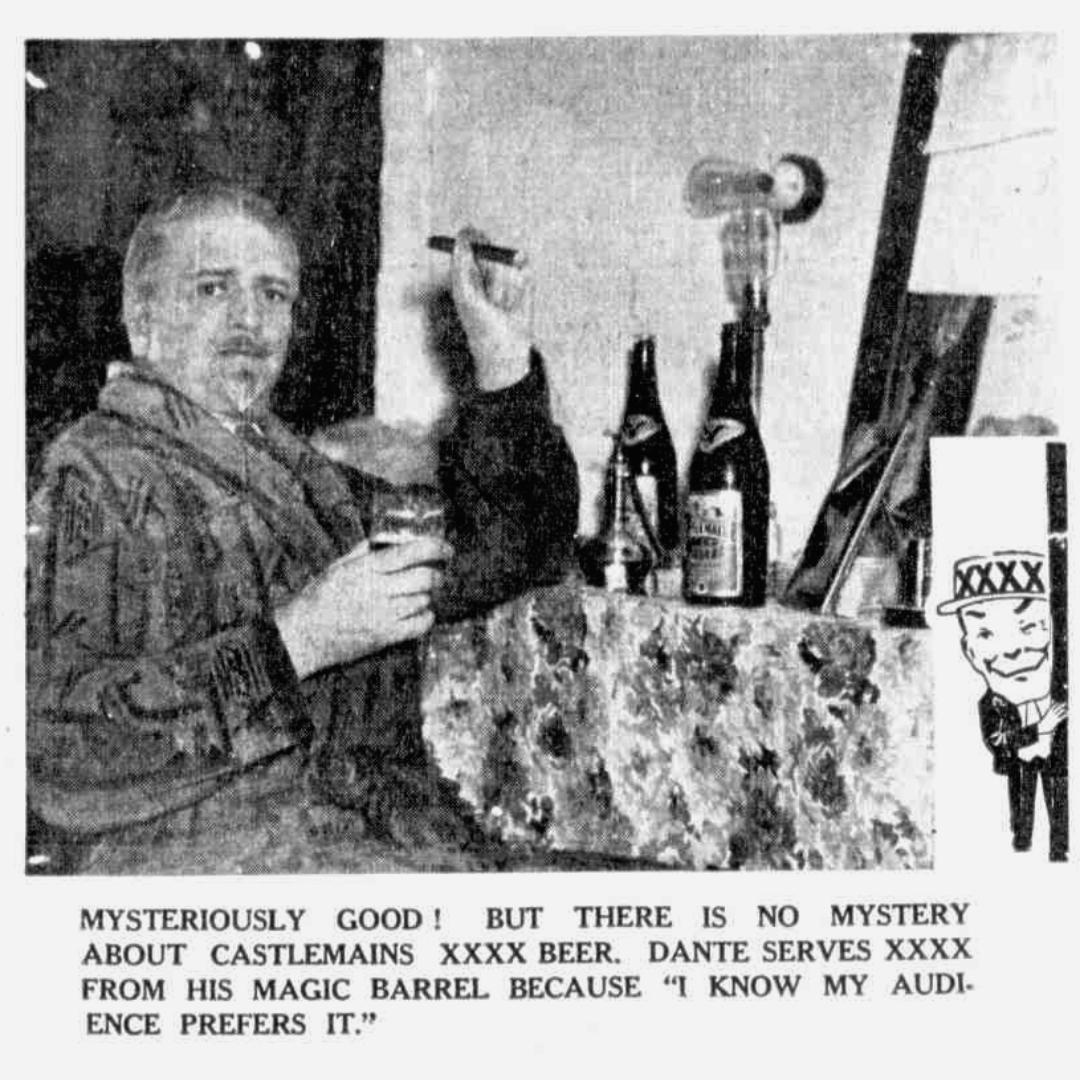
The full extent of Dante’s influencer marketing (before such a term existed), was truly a sight to behold.
Under the influence
From the beginning, Castlemaine Perkins understood the power of good press. Memorable occurrences include offering sports reporters visiting Brisbane for the First Ashes Test in December 1936 a ‘supply’ of XXXX, ‘as a gesture of good fellowship’ and sponsoring the seemingly bottomless ‘magic barrel’ of the touring magician Harry August Jansen (aka Dante) during his 1933 tour (a tour which was to end in unexpected tragedy).
"Paint a Fourex on it" - the later years
The company continue to develop, and the brewery expand, throughout the 1940s and 50s. In 1958, the Toowoomba brewery and malthouse was closed, and in 1959, the famous neon XXXX sign was placed atop the brewery by Claude Neon.
Canned beer arrived in 1961 (quite the reversal from the company’s position a quarter of a century earlier), and the stubbie the following year.
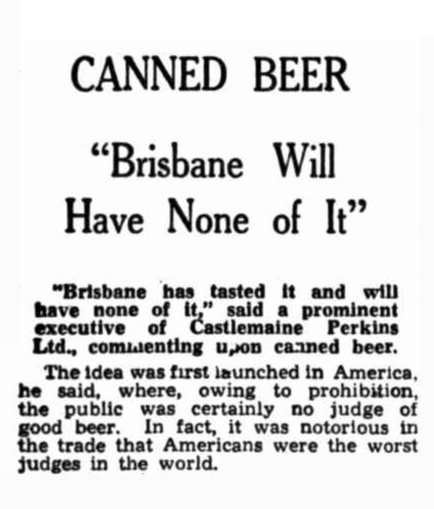
'To a thirsty man the sight of the actual beer which may be seen in the bottle is far more attractive than any design which may be printed on a can.'
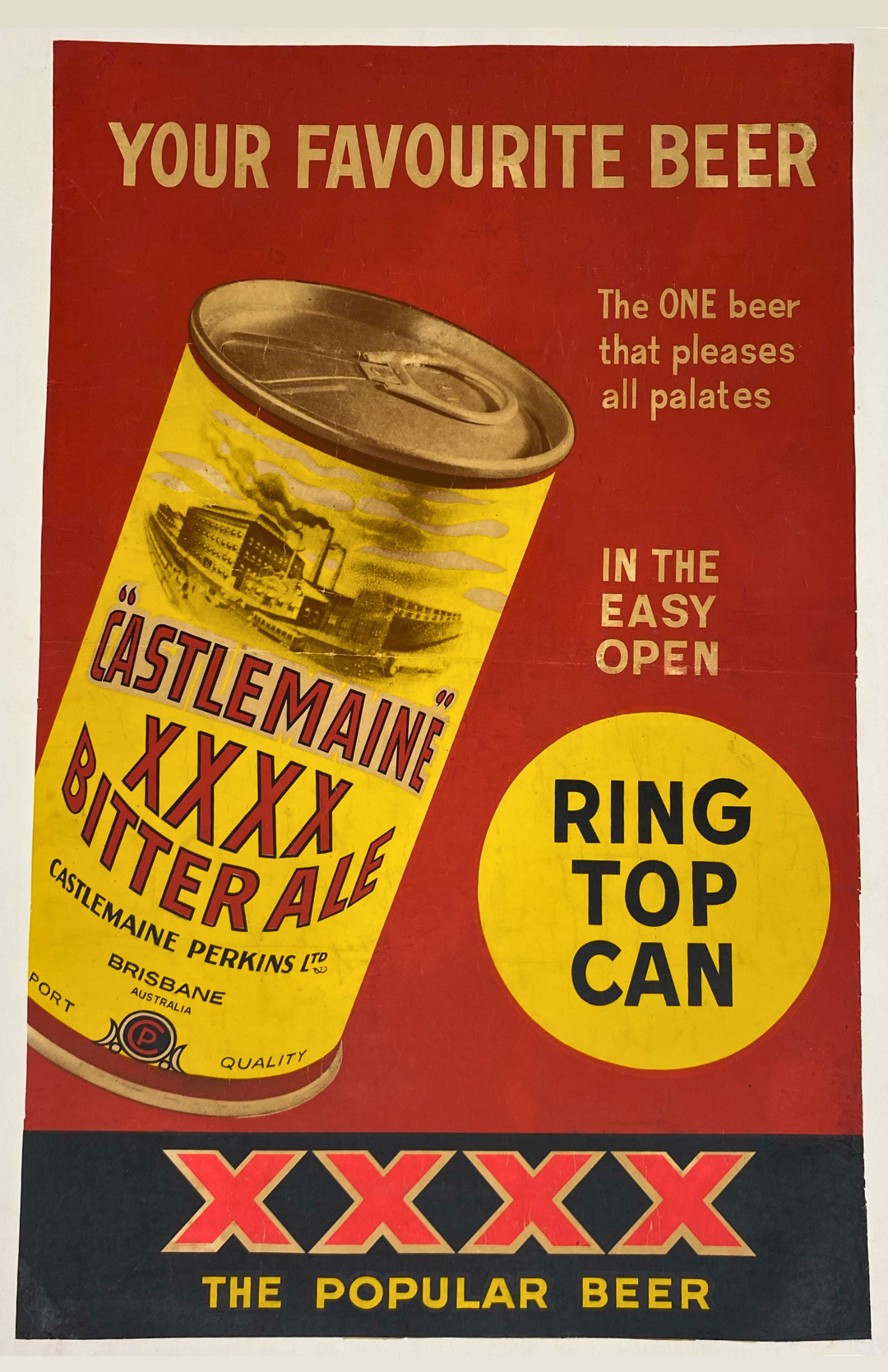
Counterpoint.
The Milton site was not immune from the devastating floods that hit Brisbane on 25 January 1974. A number of store rooms and the brewery delivery yard ‘went underwater’ and damage to the lower levels of stacked cardboard cartons caused dramatic collapses. According to The Courier-Mail, around ‘100,000 dozen bottles and cans’ affected by floodwater had to be destroyed.
While the brewery was rendered non-operational, diary excerpts from employee John Armitt published in Fourex News, recount staff creating a makeshift raft to ferry unsullied beer to safety, and demolishing a wall to roll casks into waiting delivery trucks. At the flood's maximum height on 29 January, Armitt still lists the day's sales as over 850 cartons and over 2000 kilderkins (small casks) – nearly 167,000 litres of beer.
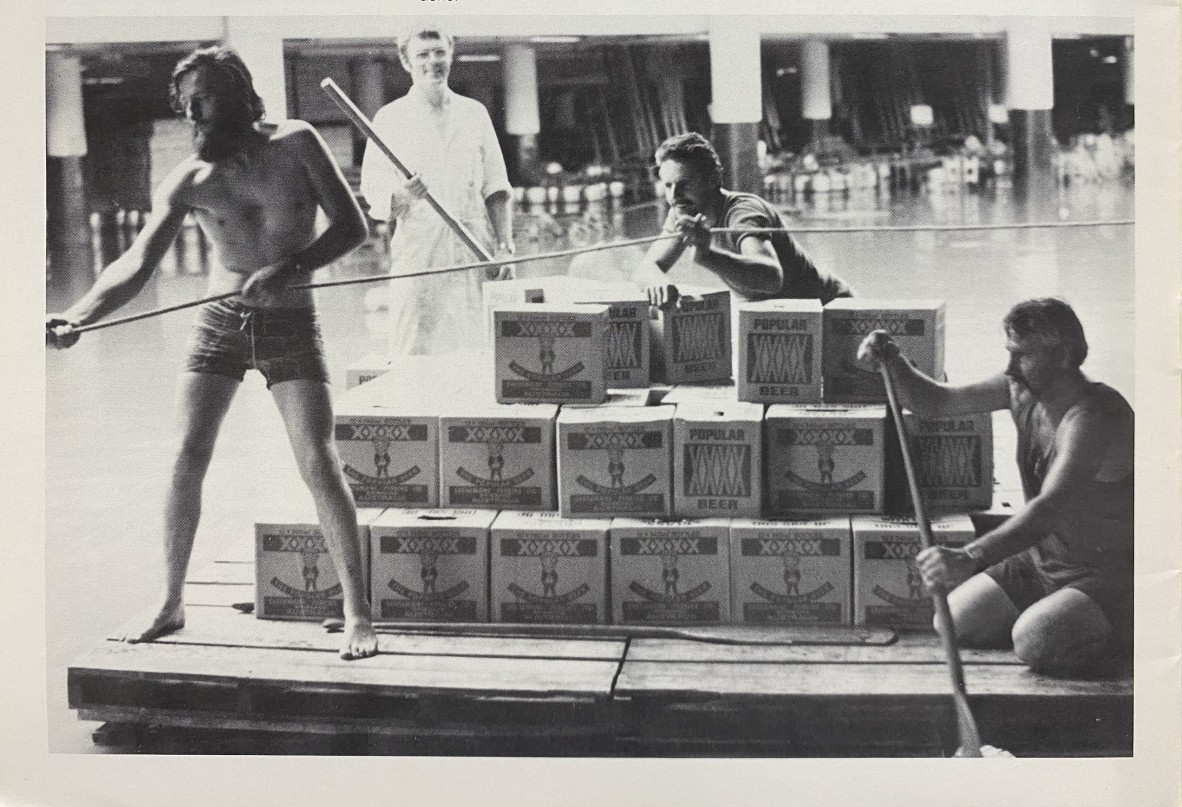
'The only way to rescue the beer was a raft constructed of pallets and empty 44 gallon drums. It wasn’t exactly efficient, but it got the job done.’
In 1989, the XXXX sign above the brewery was beginning to rust, and was refurbished by Claude Neon. At the same time, the iconic 7-metre-high Mr Fourex sign was installed on the city side of the brewery.
In 1980, Castlemaine Perkins merged with New South Wales brewing company Tooheys, to form Castlemaine Tooheys Limited, which was in turn taken over by Bond Corporation 5 years later.
In Castlemaine Perkins was acquired in 1990 by New Zealand drinks conglomerate Lion Nathan. In 2009, Japan's Kirin Brewing Company assumed 100% ownership of Lion Nathan, which was renamed Lion in 2011.
Throughout its history, the company has been closely associated with outdoor and sports advertising. A 1939 photograph from State Library’s collections shows a giant XXXX sign atop the Sandgate entrance to the Hornibrook Highway, while another favourite collection item is a 1982 Brisbane Commonwealth Games commemorative beer bottle, produced by Castlemaine Perkins, who were the Major Sponsor of the Games.
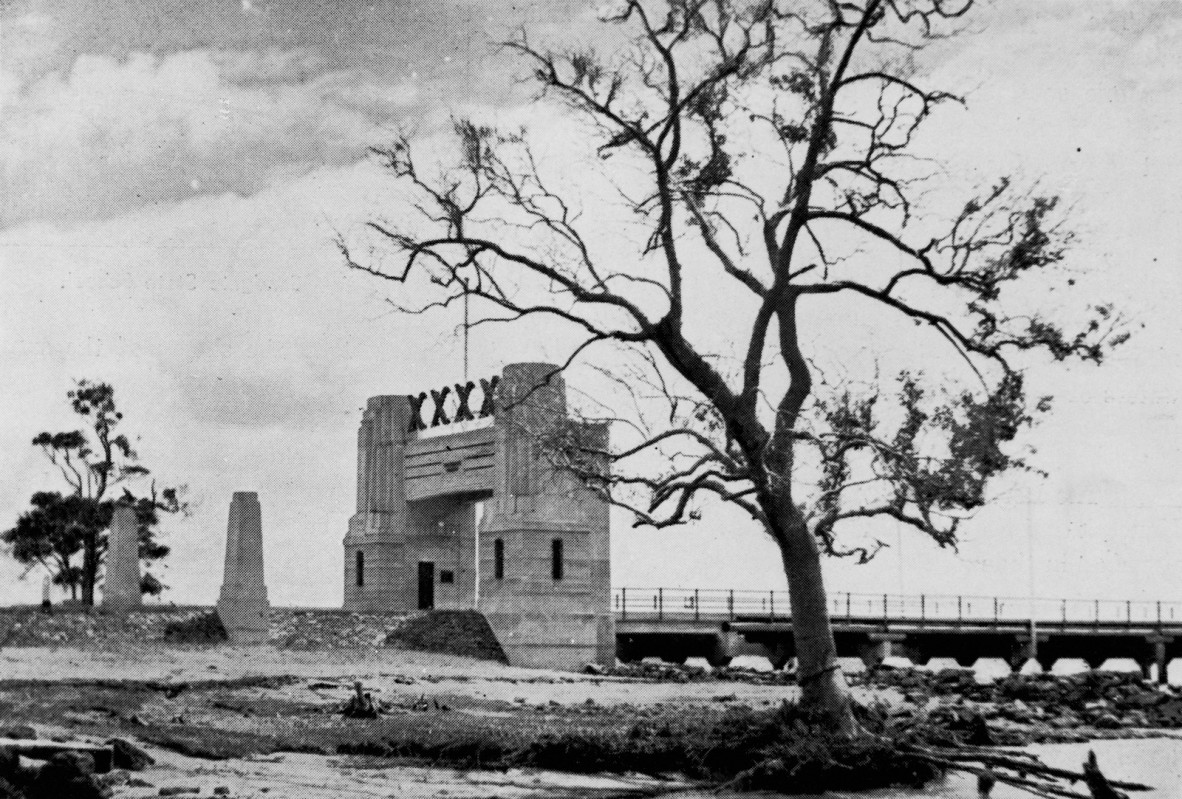
The Sandgate entrance to the Hornibrook Highway, 1939 with a very visible XXXX sign above it.
The company’s 1991 sponsorship of the Queensland State of Origin team coincided with the release of XXXX Gold, marking the beginning of 2 successful dynasties. Spend long enough in our archives, and you’ll come across a copy of Andrew Trimmer’s advertising poster for XXXX Light Bitter featuring a rampaging Queensland elephant (‘The Forward Pachyderm’) in a Maroons jersey, scattering NSW Blues players in its wake.
In 2009, Castlemaine Perkins was inducted into the State Library’s Queensland Business Leaders Hall of Fame. In an interview produced to celebrate the company induction, former CEO Frank Burnett succinctly summed up their secret to success: 'There was a bit of a joke at the company: if it moved, we sponsored it; if it was still, we painted a Fourex on it!'.
Castlemaine Perkins digital story: 2009 Queensland Business Leaders Hall of Fame.
Sources
- 1878 Castlemaine Brewery opens in Brisbane, Australian Food Timeline website, accessed 25 June 2024.
- Alois Wilhelm Leitner, Friends of Toowong Cemetary website, accessed 25 June 2024
- Castlemaine Perkins Brewery, Brisbane City Council Local Heritage Places website, accessed 25 June 2024.
- The breweries of Australia : a history (2nd ed.), 2012, Keith M. Deutsher, Beer & Brewer Media, John Oxley Library, State Library of Queensland.
- Fifty years in retrospect, 1937, Castlemaine Perkins Limited, John Oxley Library, State Library of Queensland.
- Fourex News, 1976-1985, Castlemaine Perkins Limited, John Oxley Library, State Library of Queensland.
- History of the Castlemaine Perkins Brewery, 1877 - 1993, 1993, Castlemaine Perkins Limited. Public Affairs Department, John Oxley Library, State Library of Queensland.
- Ian Stuart Gall (1904–1981), Australian Dictionary of Biography website, accessed 25 June 2024.
- OM92-53, 1974 Flood Clippings, John Oxley Library, State Library of Queensland.
- Our Story, XXXX website, accessed 25 June 2024.
- Patrick Charles Mitchell (Paddy) Fitzgerald (1896–1984), Australian Dictionary of Biography website, accessed 25 June 2024.
- National Library of Australia, Trove, trove.nla.gov.au, accessed 25 June 2024.
Comments
Your email address will not be published.
We welcome relevant, respectful comments.
